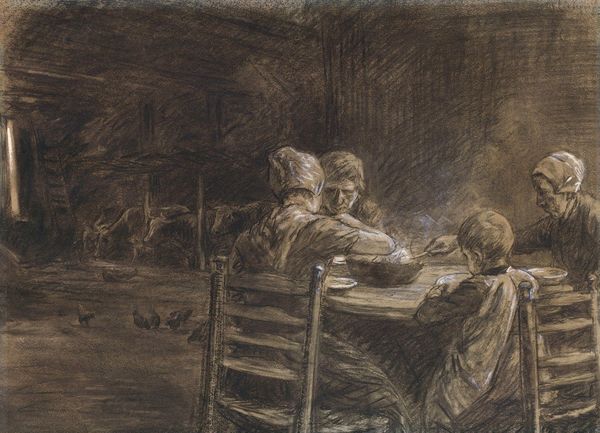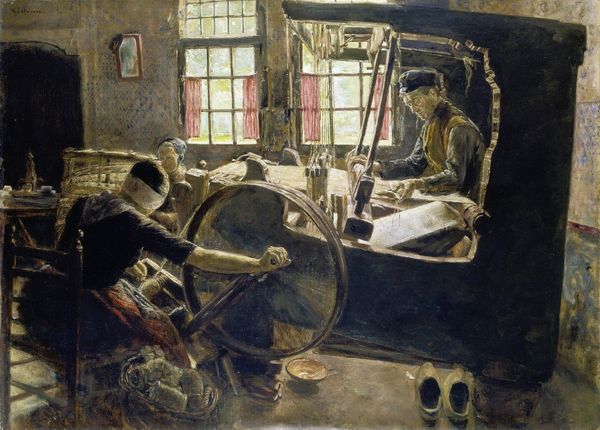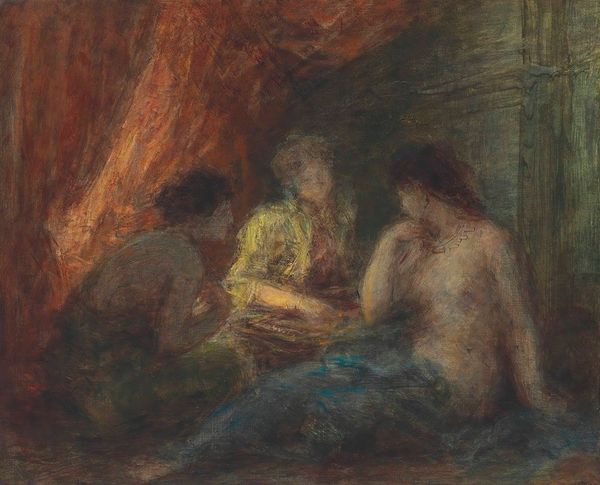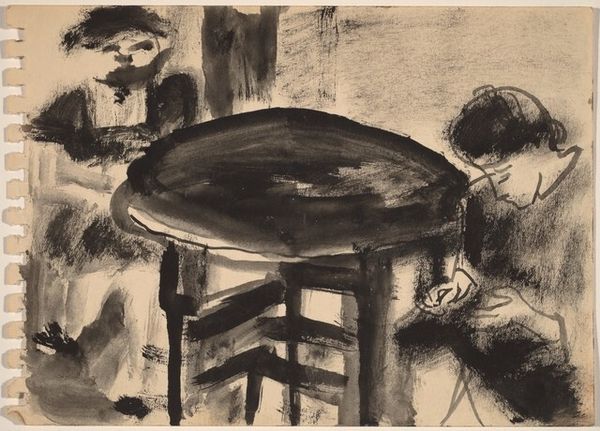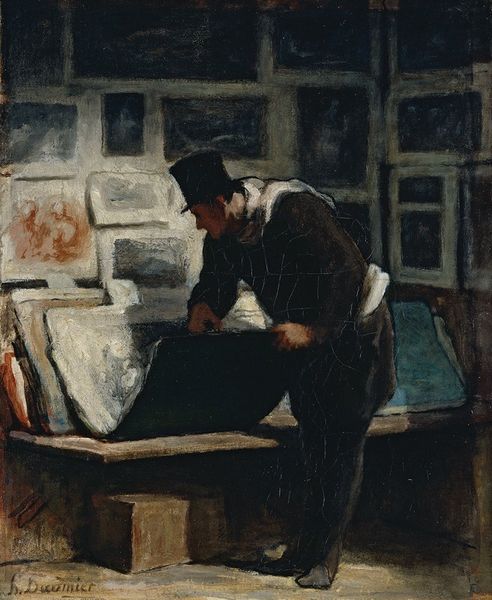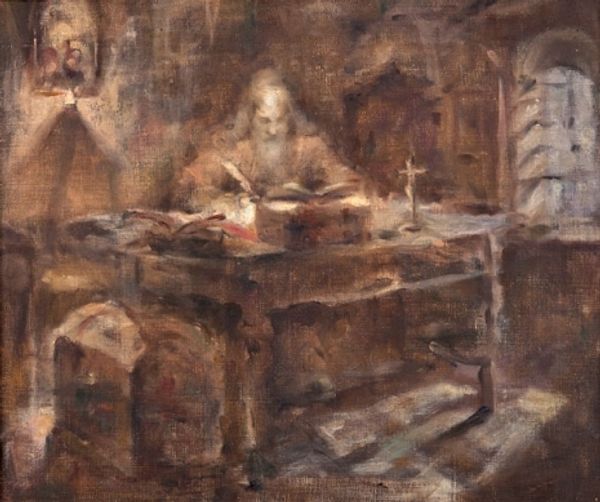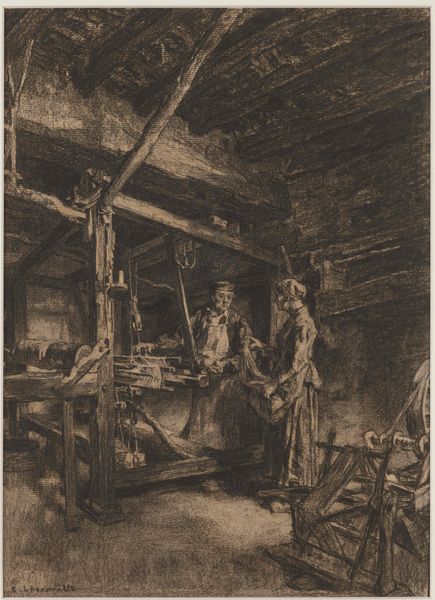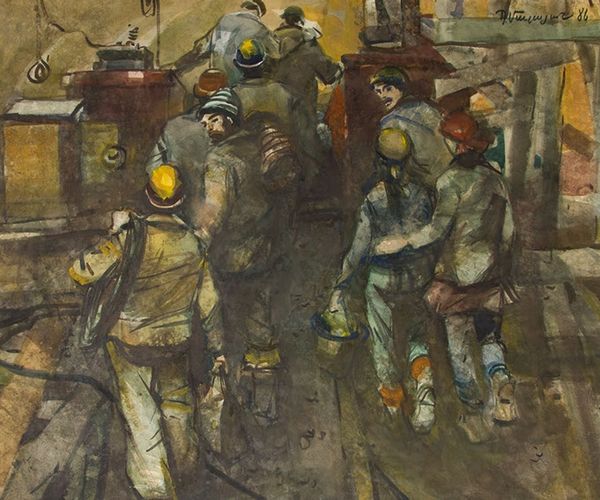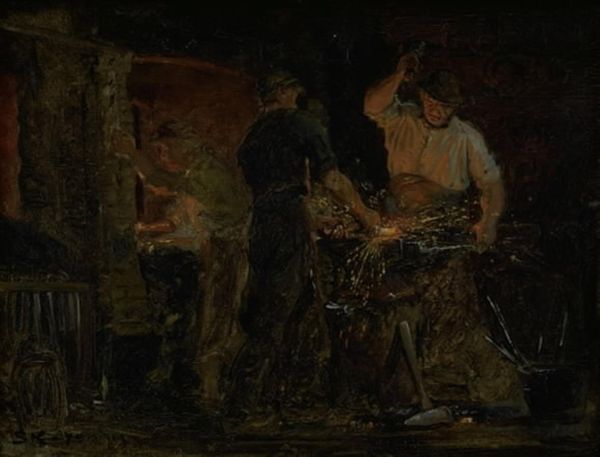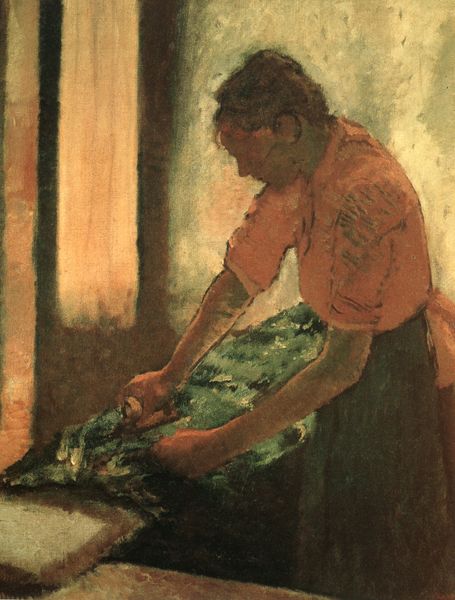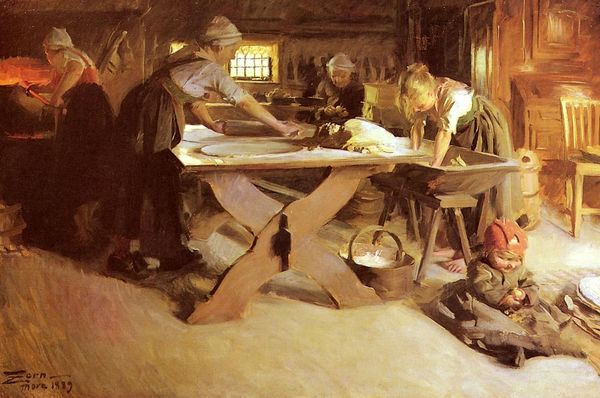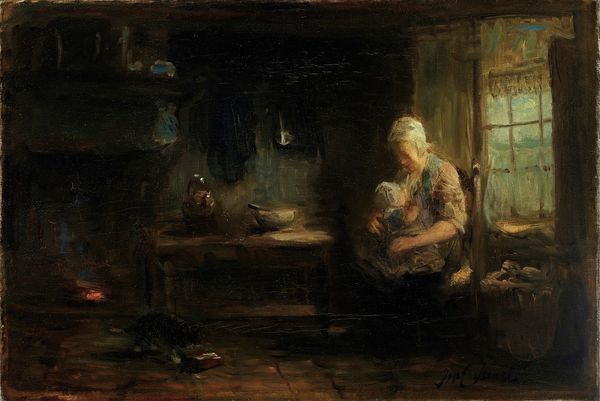
drawing, graphite, pen, charcoal
#
portrait
#
drawing
#
charcoal drawing
#
charcoal art
#
graphite
#
pen
#
genre-painting
#
charcoal
#
charcoal
#
realism
Copyright: Petros Malayan,Fair Use
Editor: This is Petros Malayan’s "Workers," created in 1985. It’s a drawing done with charcoal, graphite, and pen. The subdued palette makes it feel somber and perhaps a bit lonely, despite depicting two people together. What stands out to you in this piece? Curator: I notice the way the figures are positioned – their bowed heads and focused gazes. These postures, especially during the late Soviet era, often symbolized dedication and labor for the collective good, but can also convey a sense of burden. Notice the stark contrast between light and shadow; the areas of illumination on their hands and faces suggest they are illuminated not just by a physical light source but also by the very act of working. Does the work offer you a sense of continuity? Do you recognize cultural symbols that are repeated from previous eras? Editor: I see what you mean about the light focusing on their hands; it emphasizes the physical work they’re doing. I guess I hadn't really considered how something like posture could communicate so much about the era and its values. I’m used to seeing workers represented as heroes. But this…it seems more realistic. It feels… honest? Curator: Indeed. Malayan uses realistic symbols of the work environment. Look at the machinery hinted at in the background. These symbols suggest both progress and the potential for the individual to be dwarfed by the system. How does this tension make you feel, knowing this piece was created in 1985? Does it shift the emotional weight for you? Editor: Definitely. I see it now. There’s a sort of silent, stoic acceptance in their stances. I see that cultural memory, now. I was only focused on the somber feeling, but there is something much deeper at play. Curator: It's fascinating how these symbols and imagery can speak volumes about a culture’s mindset and how it portrays itself, isn't it? I learned much about its ability to quietly challenge a status quo, and speak with a humanistic visual language. Editor: Absolutely! Thanks, that gave me a new lens through which to understand not just this piece but others from that era too.
Comments
No comments
Be the first to comment and join the conversation on the ultimate creative platform.
